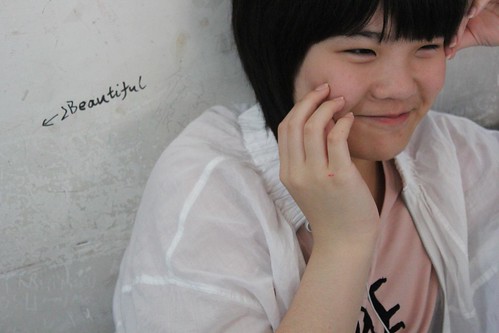
I’ve been back from China for almost a week, and have started four or five different blog posts. I can’t seem to get a tight focus on what I intend to say, so I scrap it and start over. There’s so much I want to share, so much I want to explore, but no one wants to read a novel length blog post!
I’m still in sort of an “information overload” zone--there are many implications for what my collective experiences are connecting, and discerning the most important points has been difficult. When I work with teachers in a coaching capacity, I’m always telling them to focus on just one thing. So I have decided to take my own advice, and focus on one. The number one. There are many layers to what “one” now means to me, in terms of comprehending the differences and similarities between China and the United States.
One Child, One Chance
Because of the One Child Policy in China, parents have one chance to help navigate the system to graduate a career ready child--one that can potentially take care of them as they age in a country that has no social security. Their child must get a great education and ultimately a high paying job. The reality is that the average income for most Chinese is $5,000-$6,000, a number that is less than the average amount of money that Americans spend on eating out in a year. Unless students do extremely well on the Gaokao, the Chinese National College Entrance Exam, they are destined to average opportunities that will barely allow them to survive themselves, much less support their parents or have a family of their own. These children and parents live in an “everything depends on this test” mentality at all times.
One Goal, One Revolution
Chinese parents, like American parents, largely have the same goal: success for their children. They want the best, they want the biggest bang for their hard earned dollars. There’s been a lot of comparisons in the media between China and America in terms of education and economy, resulting in short-sighted implementation plans for changes based on reactive solutions to perceived problems that must be solved. The reality is that both systems are designed for valuing the “test” and both systems are hinging on economic excesses that benefit the top fraction of the population. We don’t need changes. We need a revolution. We need what Heidi Hayes Jacobs calls “Future Schools Now.” We need courage in planning and courage in this economy. Firing teachers, canceling programs, putting the burden of our nation’s ills on the backs of children is not the answer. In a recent New York Times article, Dave Eggers writes, “how are we paying for three concurrent wars? How did we pay for the interstate highway system? Or the bailout of the savings and loans in 1989 and that of the investment banks in 2008? How did we pay for the equally ambitious project of sending Americans to the moon? We had the vision and we had the will and we found a way.” I really think our Nation’s leaders need to try harder. We have a common goal. We need revolutionary thinking.
One World, One Perspective?
While in China, it was hard not to notice the explosive level of construction. I started to think the construction crane was a national symbol. The amount of resources being used was staggering, but honestly, that was US-centric thinking. The United States uses more resources than China (currently) with a population that is ⅕ of China’s. There’s a major shift coming whether we like it or not. The Earth is going to run out of its non-renewable resources and we’re going to need the next generation to be excellent critical thinkers and creative problem solvers, especially in the discovery of sustainable synthetic fuels and other sources of clean energy, building materials, food, and clean water. Are the kids today, in China or America, capable of solving those problems in the current educational structure? No. Are the plans for implementing sweeping educational reforms going to really prepare kids for solving the problems of the future? I don’t think we’re quite there yet.
One Problem
Collectively, we really have one problem: How do we tear down a system that we know is not working and completely replace it with all the new forms necessary for real preparation for global citizenry? The number of roadblocks are substantial. The red tape is ridiculous. We have so much media that covers the identification of problems, but very few that offer solutions. I hope that Dave Eggers is right, that with the right vision, we will find a way.
The picture above is of a student in Stephen Wilmarth’s class at the Number 1 Middle School attached to Central China Normal University, in Wuhan, China. Of the thousands (literally) of pictures I took, it ended up being my single favorite, and I wanted to share it.
Elements of this blog post were influenced by:
Maarten, J. Lost on Planet China: One Man's Attempt to Understand the World's Most Mystifying Nation. Broadway, 2009. Print.
Zhao, Yong. Catching up or leading the way: American education in the age of globalization. Assn for Supervision & Curriculum, 2009. Print.
Hayes, Heidi. Curriculum 21: essential education for a changing world. Assn for Supervision & Curriculum, 2010. Print.
"America By The Numbers." Parade Magazine 1 May 2011: Web. 1 May 2011. <http://www.parade.com/america-by-the-numbers/index.html>.
Follow Mike on Twitter
Follow the Curriculum 21 Podcast Channel on iTunes

No comments:
Post a Comment